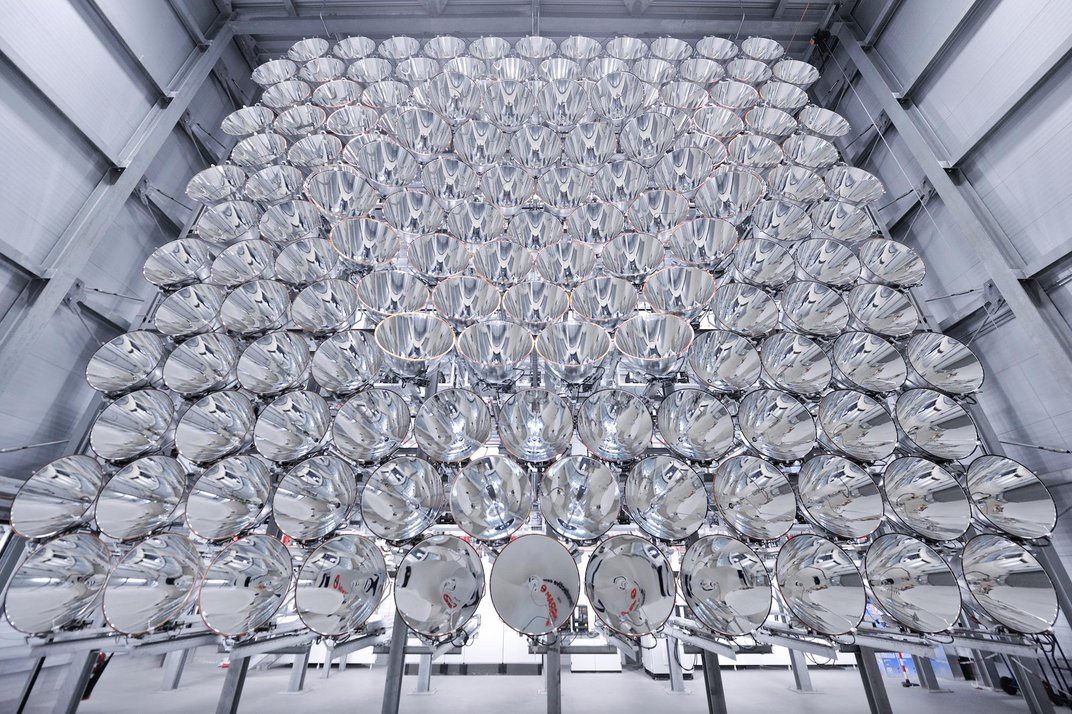Scientists in Germany have created an extremely powerful light system capable of focusing energy equivalent to the radiation of 10,000 suns on a single area.
Called Synlight, this massive “artificial sun” is located in Juelich, around nine miles west of Cologne, Gizmodo reports. Scientists at The German Aerospace Center (DLR) put together 149 xenon short-arc lamps, such as the kind used in cinema projectors, to reproduce and focus energy as much as would come from 10,ooo suns.
They hope that this light system could soon be used to produce environment-friendly fuels.
When Synlight was launched, the scientists focused the lamps, which were arranged in a honeycomb shape and could produce 350 kilowatts, onto one eight-by-eight-inch metal sheet. Bernhard Hoffschmidt, DLR Director, says the artificial sun can create temperatures as hot as 5,432 degrees Fahrenheit (3,000 degrees Celsius). Synlight measures a vast 45 feet high and 52 feet wide.
Why the need for a sun on Earth? According to the scientists, they are coming up with new ways to force elements into existence, particularly hydrogen. Unlike other fuels, hydrogen does not produce carbon emissions when burned, meaning no greenhouse gases and no effect on global warming.
However, hydrogen fuel is not naturally-occurring on the planet. It requires specific conditions to split water into hydrogen and oxygen. So when this light system is focused on a single sheet of metal, it heats it to 1,475 degrees Fahrenheit (800 degrees Celsius). The metal is sprayed with vapor, causing it to react with the oxygen in water and leaving hydrogen behind. Further heating causes the oxygen to separate from the metal.
In its liquid state, hydrogen fuel is incredibly volatile and can combust with only a tenth of energy that would cause gasoline to light up. Measures to make hydrogen fuel safe include highly pressurized tanks, or adding carbon monoxide to create environment-safe kerosene fuel that could be used in aviation and rockets.
Synlight is still in its testing phase, but once proof-of-concepts are achieved, it could be made even bigger so that it can be used in industrial-scale applications.
























